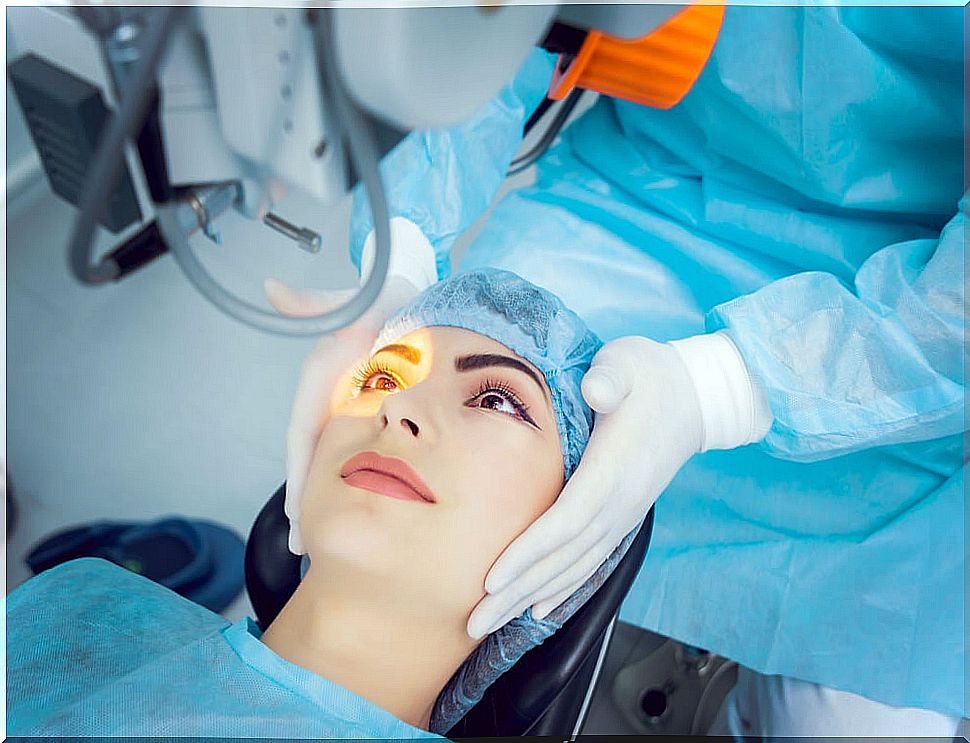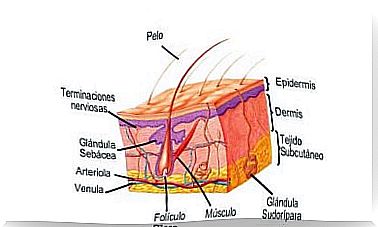Open-angle Glaucoma: What Does It Consist Of?
Open-angle glaucoma creates a risk of blindness if it is not treated in time. The problem is that it rarely produces symptoms and that is why it often goes unnoticed.

Open-angle glaucoma is an eye disease that can lead to blindness. It causes damage to the optic nerve that causes loss of the visual field. On many occasions it is associated with increased pressure in the eye, but it can also occur with normal pressure.
There is open-angle and closed-angle glaucoma, but the most common is the former. It is estimated that it corresponds to 90% of the total cases. Depending on the region, it can be the second or fourth cause of blindness in the world.
Open-angle glaucoma is also called primary or chronic glaucoma . It runs slowly and throughout life. For a long time it progresses without presenting symptoms and often goes unnoticed.
Possible causes of open-angle glaucoma
Open-angle glaucoma, in most cases, occurs when the drainage channels of the eye become blocked. This leads to increased intraocular pressure and damage to the optic nerve.
The eye’s drainage system forms an angle from the iris to the cornea. From there it is connected to the outside by conduits. In people with this type of glaucoma the angle is open, but there is no proper drainage.
The reasons for poor drainage have to do with the ducts being clogged or too narrow. As the fluid does not drain out, the pressure in the eye increases and this damages the optic nerve. Therefore, the ability to see is diminished.
Some people have an optic nerve that is more susceptible to pressure in the eye. Africans are at higher risk of developing this disease. Also those over 60, especially of Latino origin, and those who have a family history or suffer from diabetes.

Main symptoms
Open-angle glaucoma develops very slowly and silently. In most cases, people realize that something is wrong when there is loss of vision. By then, the optic nerve is badly damaged.
The initial loss occurs in peripheral or lateral vision. However, sharpness and visual acuity are preserved until the disease is very advanced. The most common is that it is only detected in a routine examination.
Diagnosis of open angle glaucoma
Ideally, open-angle glaucoma should be detected early, before optic nerve damage has advanced. This is accomplished with regular eye exams. Those who are part of the risk groups should have periodic check-ups.
The most advisable thing is to increase the frequency according to age, as follows:
- Before age 40: a checkup every two to four years.
- From 40 to 54 years: once a year or once every three years.
- From 55 to 64 years: once a year or once every two years.
- Over 65 years: once every six months or once a year.
Several tests can be done to determine if open-angle glaucoma is present. The most common are the following:
- Tonometry: it is a test to measure the internal pressure of the eye.
- Ophthalmoscopy: the optic nerve is examined to establish possible damage.
- Perimetry: visual field test. It allows to determine if and to what extent the vision has been affected by open-angle glaucoma.
- Gonioscopy: establishes whether the angle between the iris and the cornea is open and wide or narrow and closed.
- Pachymetry: measures the thickness of the cornea.
Sometimes all of these tests are done and sometimes only some of them. Open-angle glaucoma is not always easy to diagnose.
What treatment options are there?

Treatment of open-angle glaucoma is focused on reducing the pressure inside the eye. If the optic nerve is damaged there is no way to recover it. Hence the importance of early diagnosis and approach.
In general, there are 3 therapeutic routes and they are the following:
- Medications: these are almost always drops. These drugs cause the eye to produce less fluid or increase its flow to the outside.
- Laser surgery: This type of surgery helps the eyes drain fluid better or decreases the amount that the eyes produce. It is an outpatient operation and is usually effective in lowering eye pressure.
- Conventional surgery: in this case, the fluid is redirected to avoid the drainage system that does not work. New drainage routes can also be created.
Open-angle glaucoma is not always treated the same
The treatment to choose depends on the state of the optic nerve and the health conditions of each patient. The doctor will indicate the benefits of each alternative and will recommend the most appropriate, according to the particularities.
In many cases, patients with conventional or laser surgery may require the use of medications after the operation. The positive effects of the intervention may also wear off after some time.









